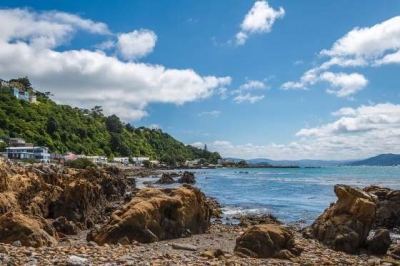New Zealand uses satellite images to track coastal health
By IANS | Published: September 21, 2022 03:15 PM2022-09-21T15:15:05+5:302022-09-21T15:25:37+5:30
Wellington, Sep 21 For the first time in New Zealand, satellite images have been used to track coastal ...

New Zealand uses satellite images to track coastal health
Wellington, Sep 21 For the first time in New Zealand, satellite images have been used to track coastal health to collect data of changes in suspended sediment in order to prevent threats to marine life, a new report revealed on Wednesday.
In the report commissioned by the Department of Conservation, the National Institute of Water and Atmospheric Research (NIWA) analysed satellite images to measure changes in suspended sediment or total suspended solids (TSS) in the country's coastal waters, reports Xinhua news agency.
TSS contains a variety of material, such as mud and silt, microalgae and their breakdown products, while high concentrations of TSS can cause problems for estuaries, coasts and oceans, and aquatic life, according to the NIWA.
High TSS can affect the ability of marine life to catch food, blocks light from reaching underwater plants, and is associated with elevated levels of pathogens, nutrients and pollutants.
Department of Conservation Technical Advisor Helen Kettles said that too much sediment reaching coastal waters is a serious threat to marine life.
"This research helps us to understand which coastal areas are likely to benefit from improved conservation effort and track how conditions change with time," Kettles said.
NIWA Principal Scientist for Remote Sensing Matt Pinkerton said these trends are driven by a combination of factors.
"We suspect that changes in phytoplankton across the New Zealand shelf because of climate variability and change, the effects of waves and coastal storms on coastal erosion and resuspension of seabed sediment, and changes to land use are all influencing these broad-scale trends," Pinkerton said.
On a smaller level, what's happening in catchments and in rivers is affecting downstream water clarity in estuaries and on the coast, he said.
Disclaimer: This post has been auto-published from an agency feed without any modifications to the text and has not been reviewed by an editor
Open in app